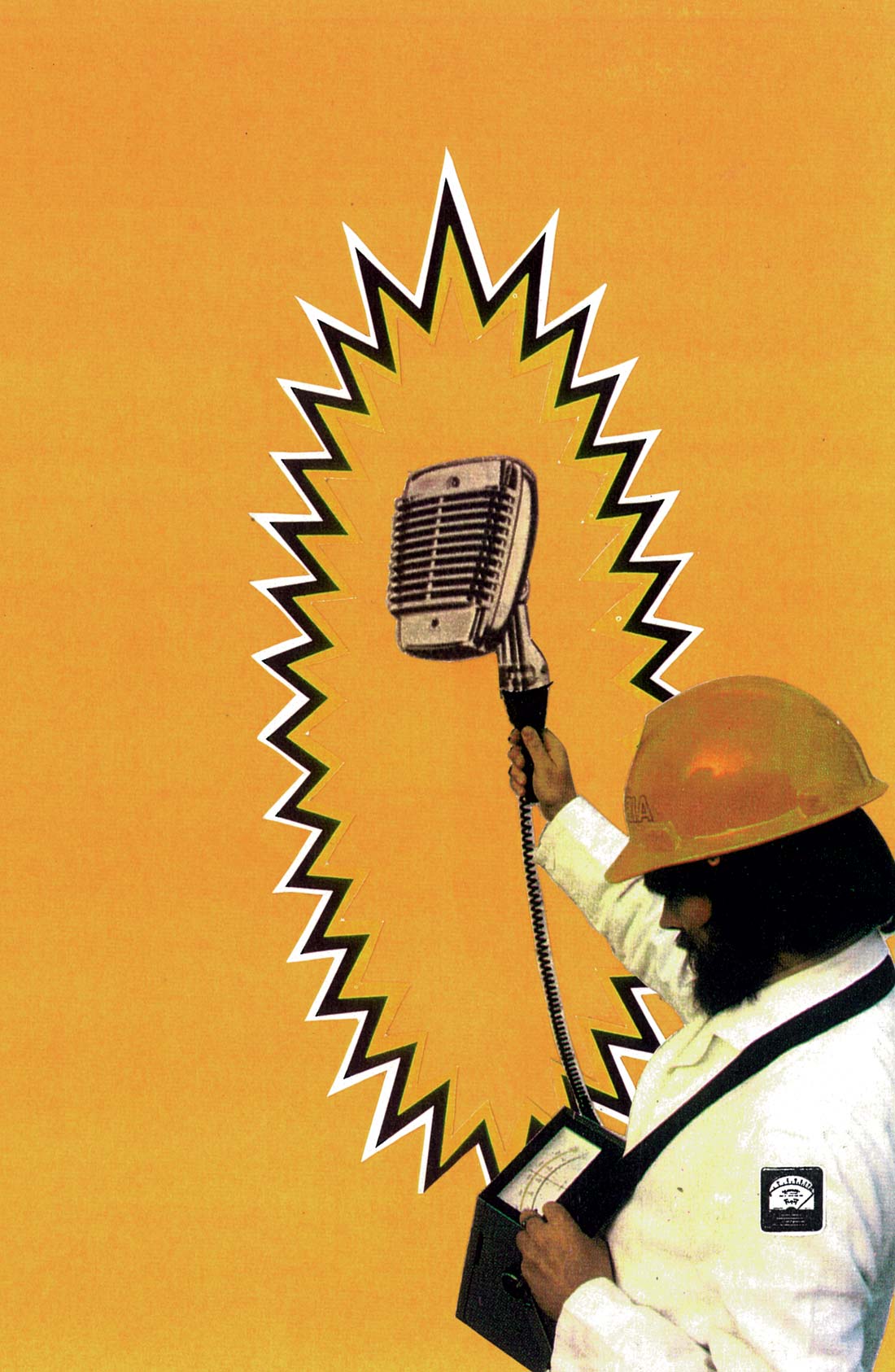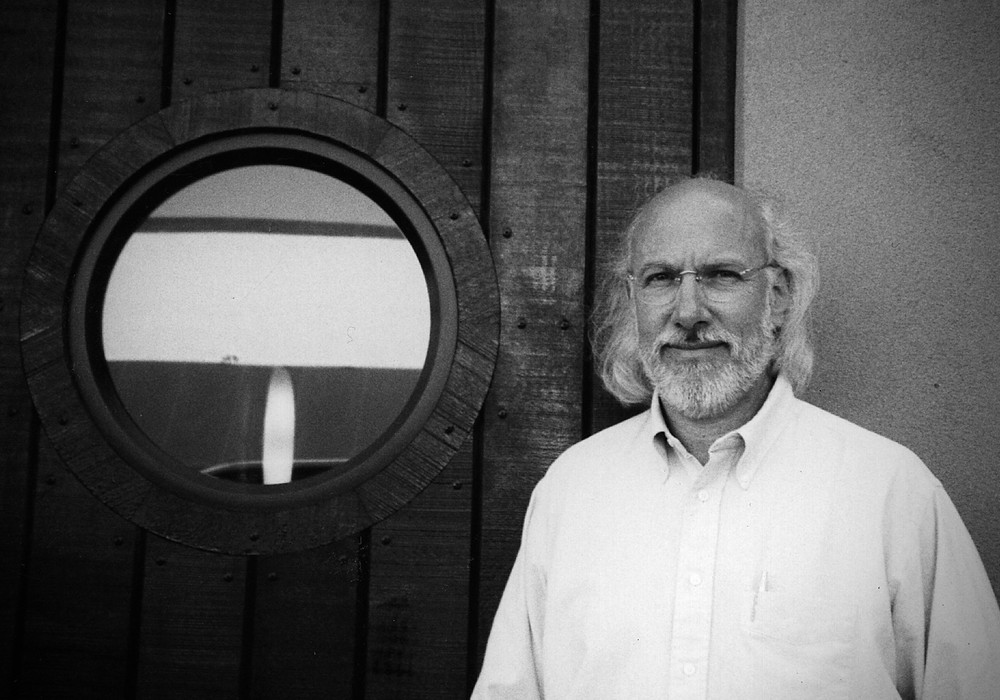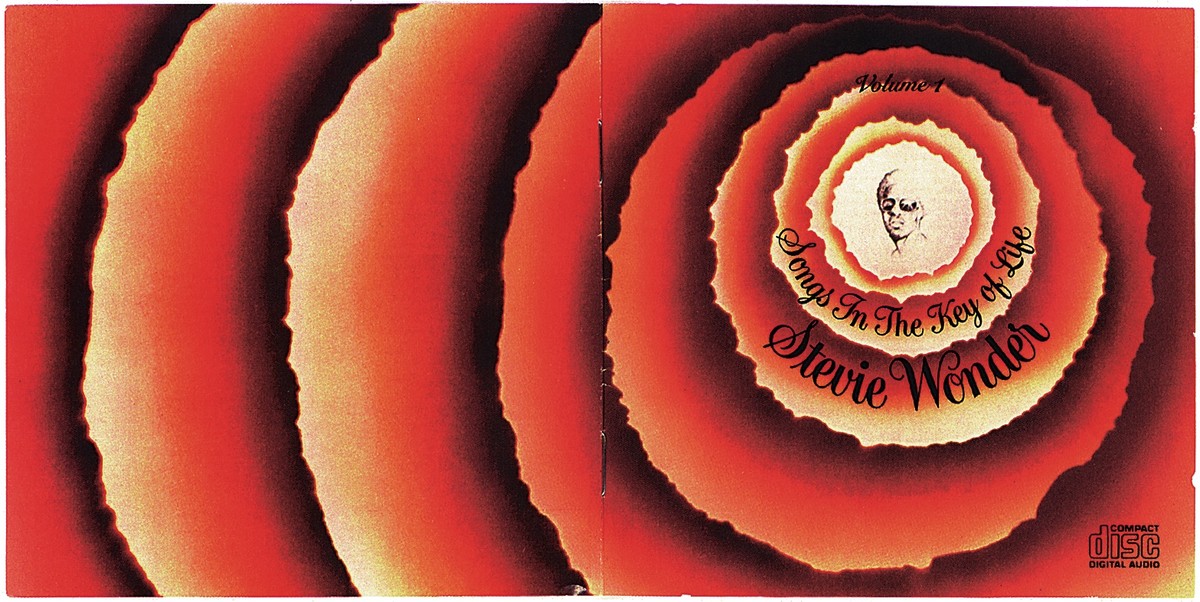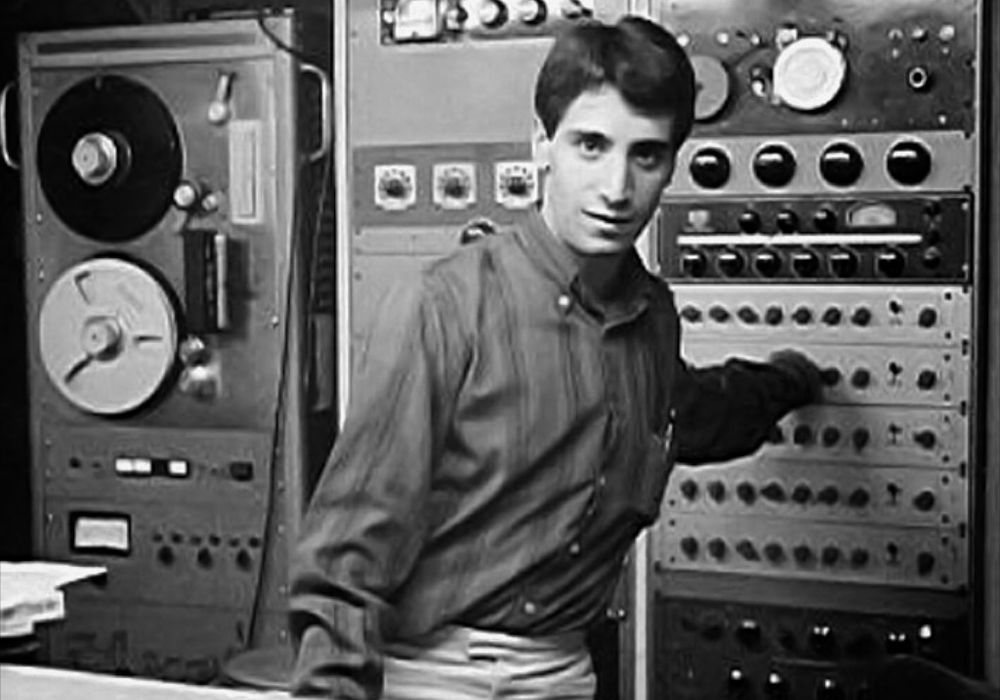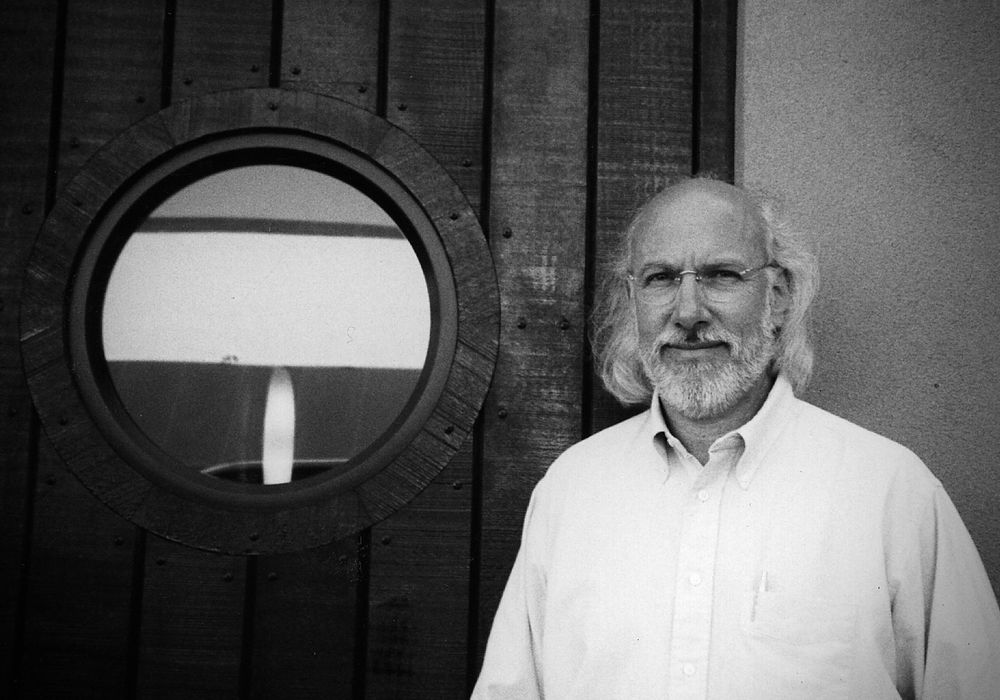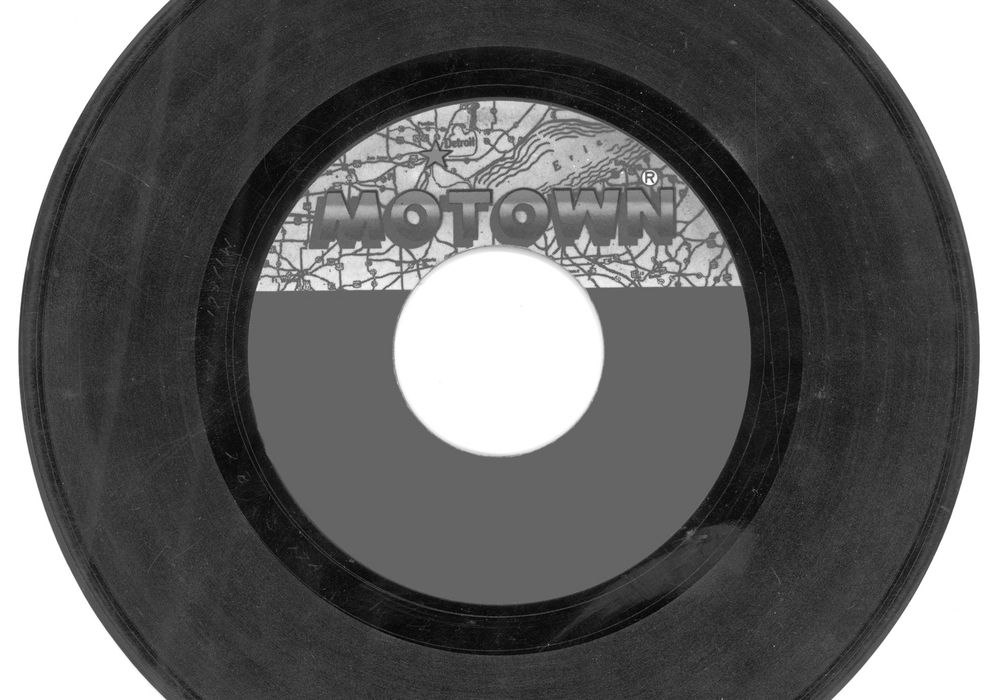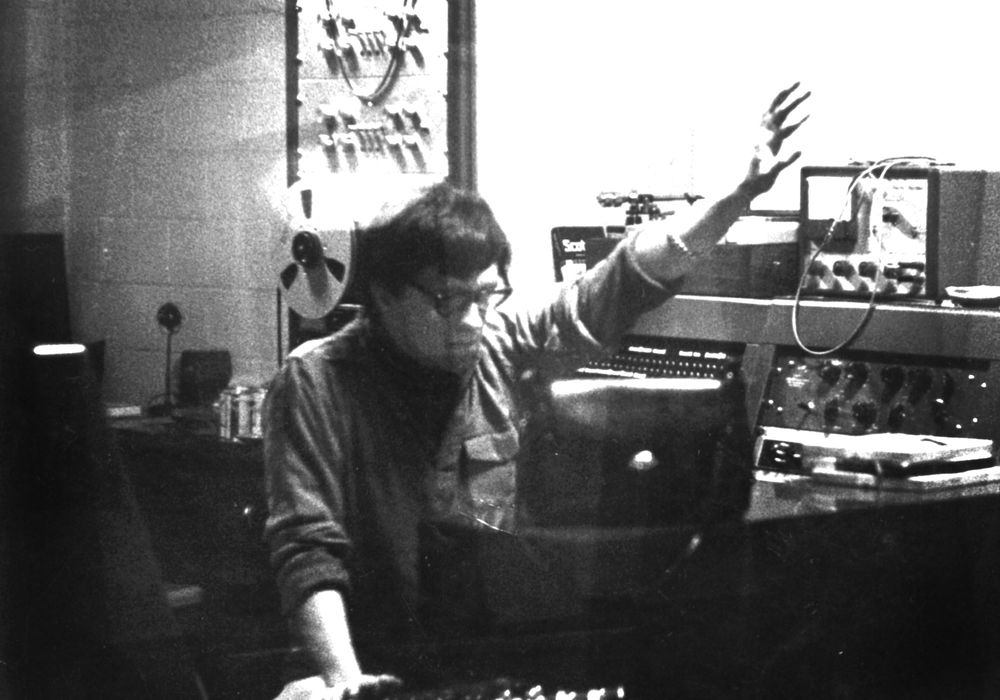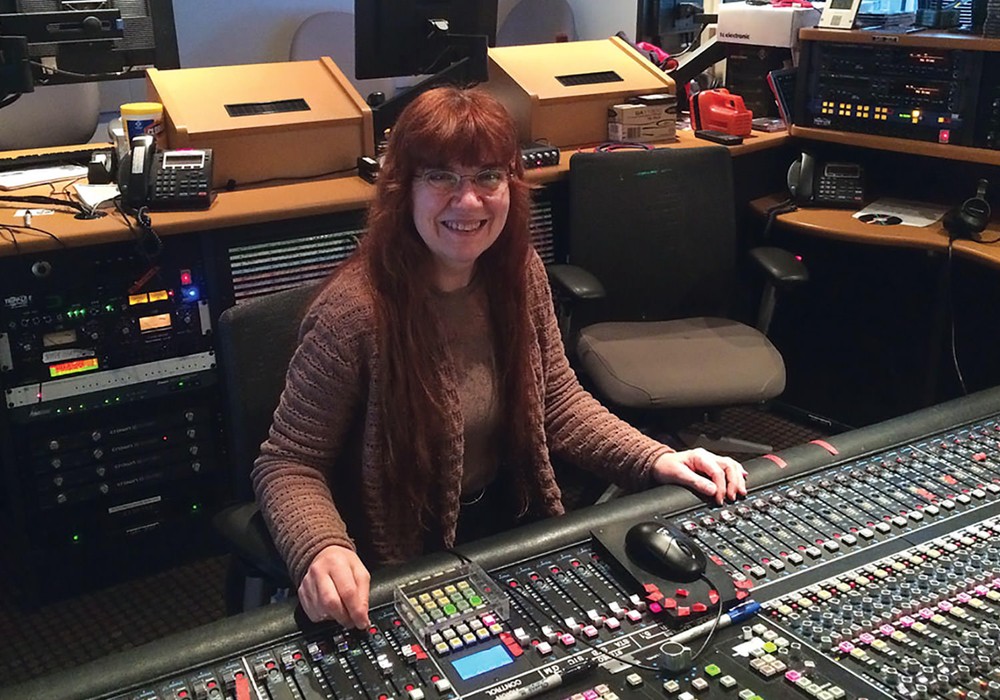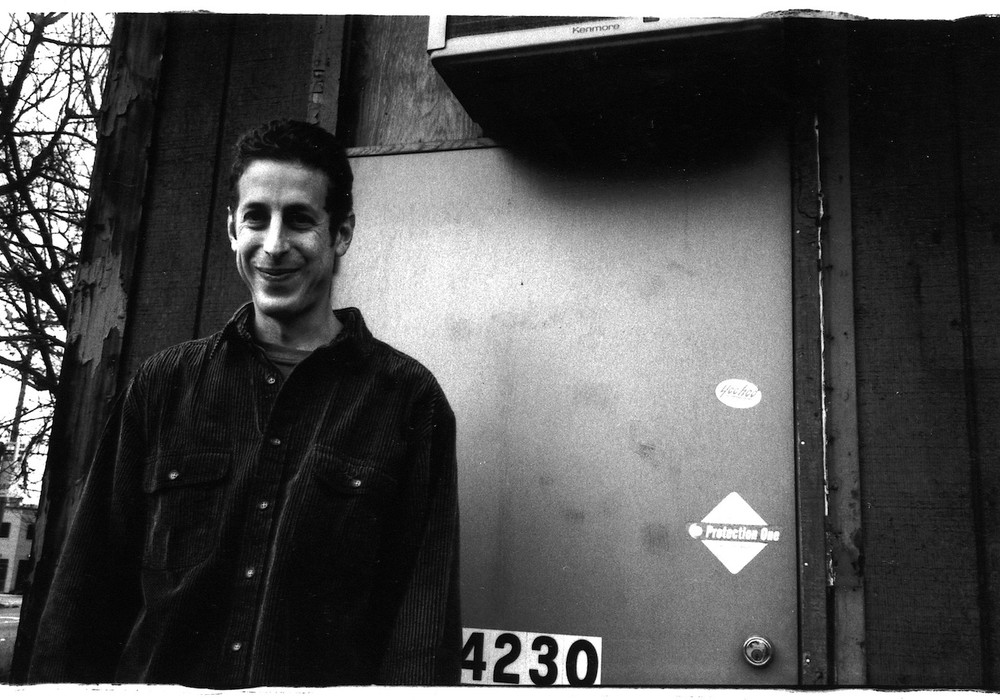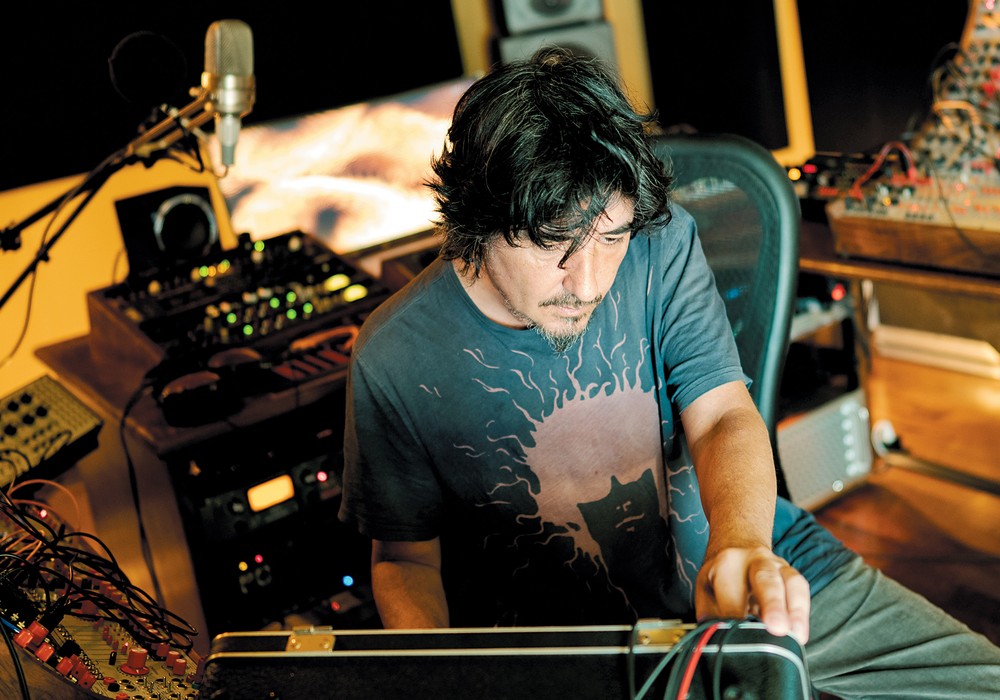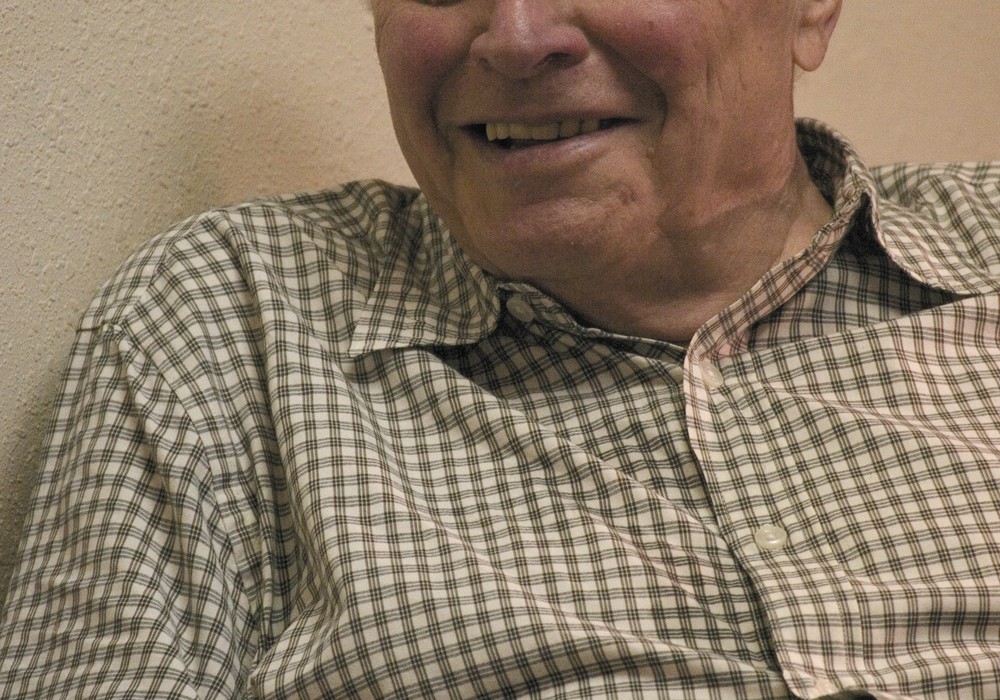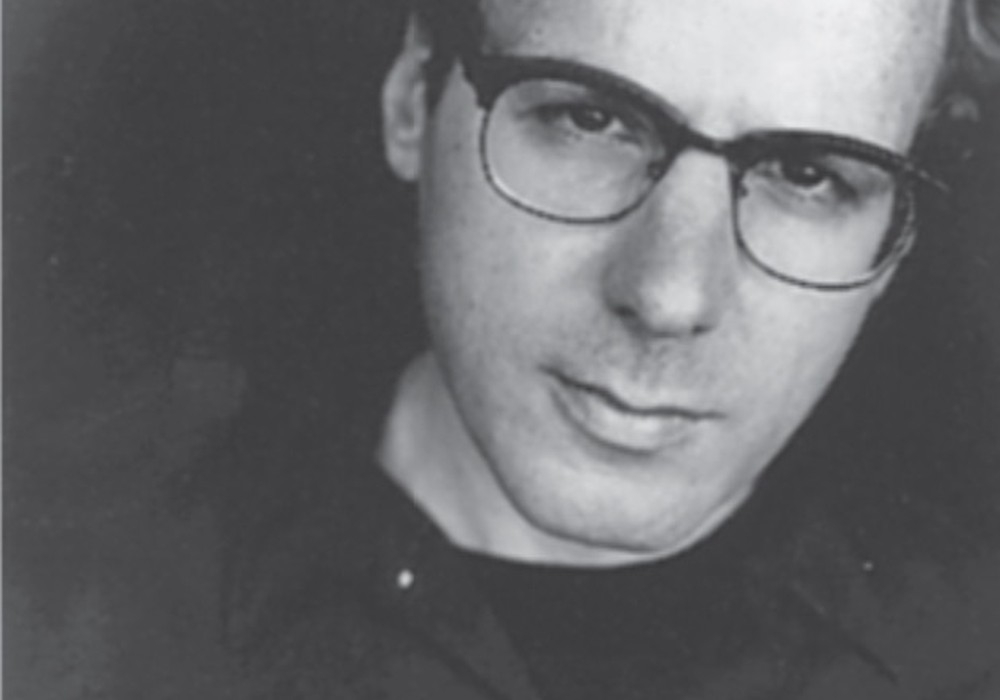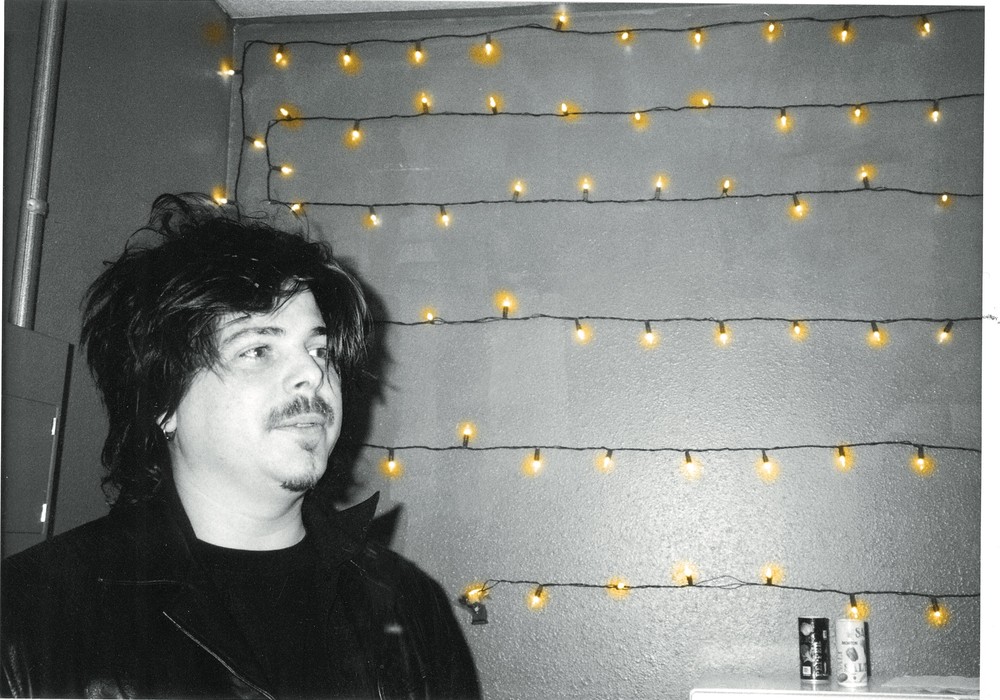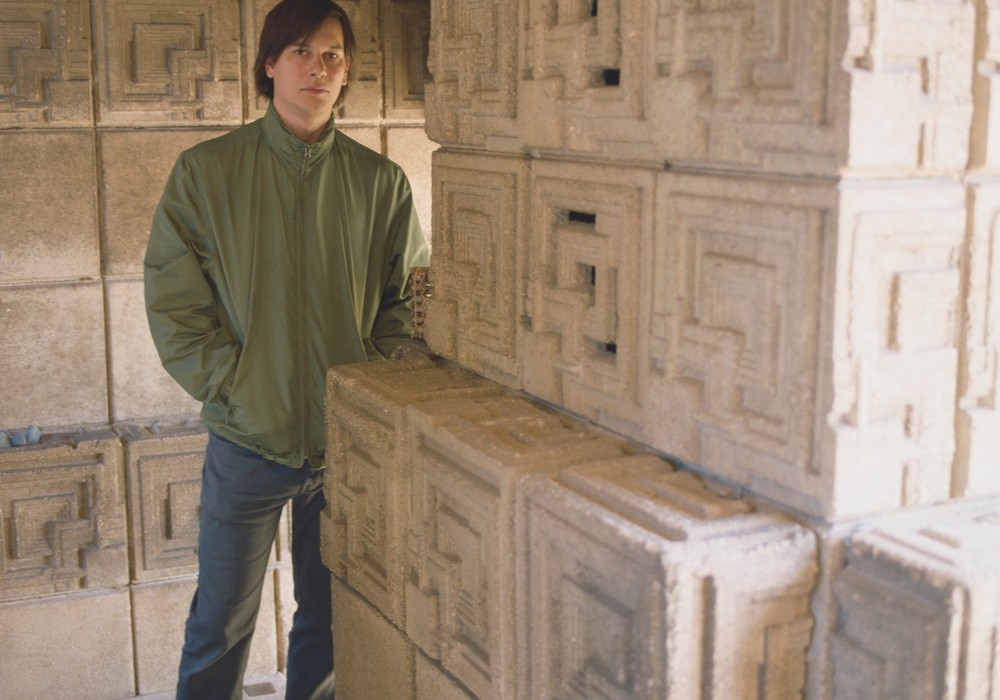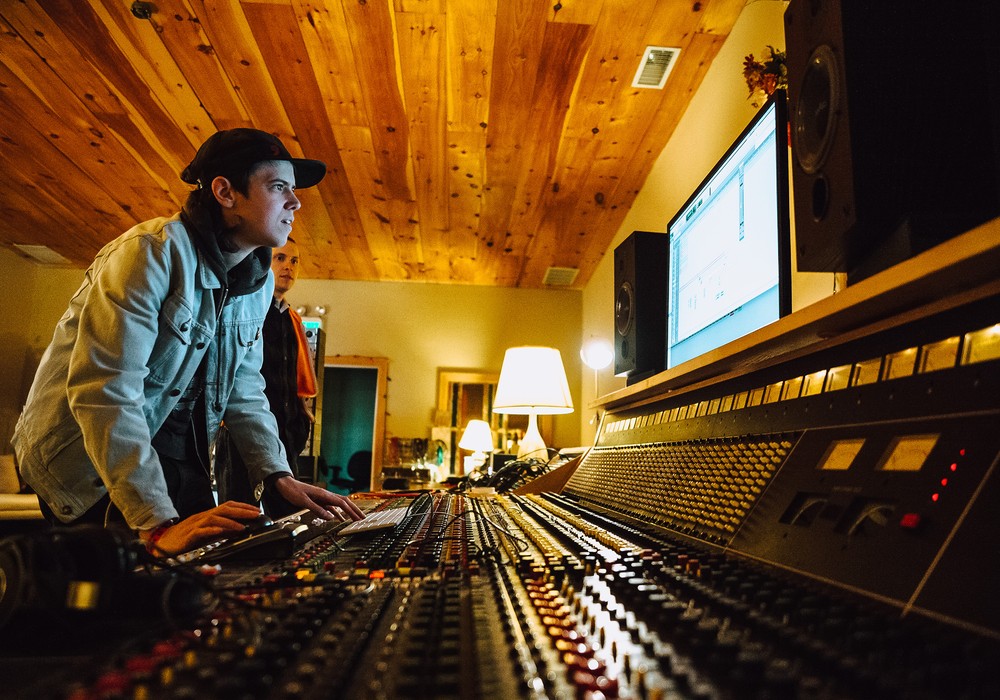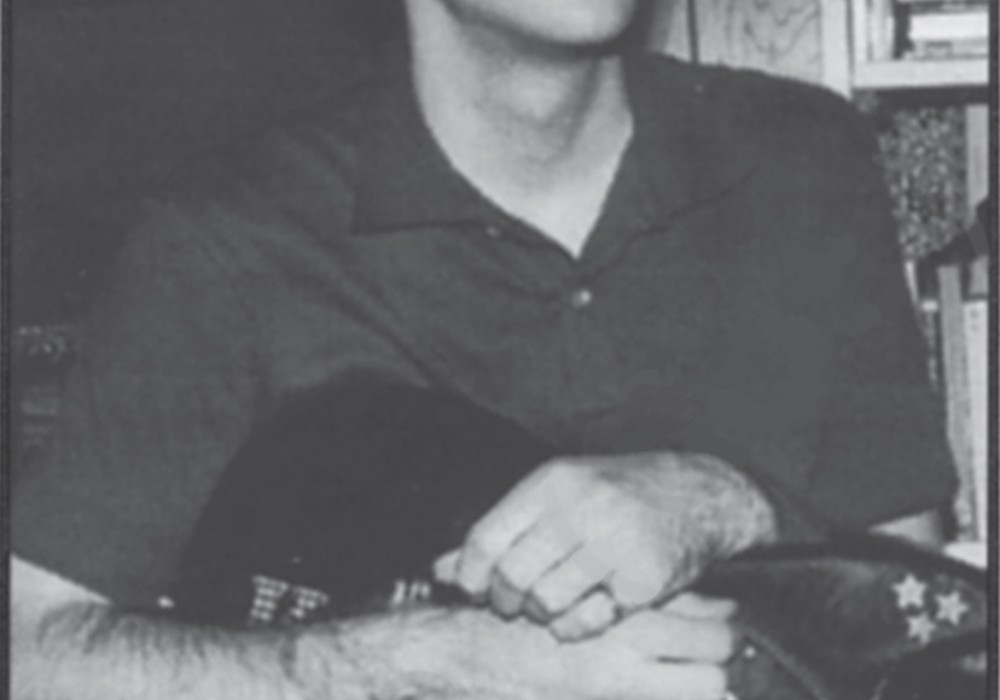John Fischbach is a world-class producer/engineer who has had his hands on the console since the late '60s. He's worked with artists as diverse as Carole King, War, the Burrito Brothers and even the Circle Jerks. He also ran the well-known studio, Crystal Industrial, Inc., in LA for years and last year produced an album by Cuban artist Juan Formel that was nominated for a Grammy.
Still, above all, he will surely be regarded historically for his groundbreaking work with Stevie Wonder in the mid-to-late '70s, especially on the Motown artist's masterpiece, Songs in the Key of Life. His relationship with Stevie has been one of almost exhausting creativity and continues to this day on various projects. My particular relationship with John began when I was 16 and living in Northern California. I needed a job, and he had recently "retired" from the business and now owned a deli around the corner. We made sandwiches for about a year and talked about music until, at 17, I quit the deli, moved out of the house and to Los Angeles, where I had originally grown up. I started a rock band called the Freewheelers, and in 1990 we called upon John to produce our first album for DGC Records. Thus began his reluctant, but ultimately rewarding, return to "the biz", and the latest chapter in his saga of "capturing the vibe" in a recording studio. We've worked on and off for the past ten years and I've since learned most of what I know about producing and engineering from John.
My favorite advice I've gotten from John? When a take is actually good he says, "All we can do from this point is fuck it up!" John arrived recently in Portland to co-produce an album with me by world-renowned jazz drummer, Mel Brown. It was sort of full circle as, like John, Mel had worked with Stevie Wonder in the past, having been on the Motown payroll for many a year. We came together at Jackpot! Studios to kick out an instrumental funk album and had a ball. - Luther Russell
Luther Russell: How did you end up working with Stevie in the first place?
I ended up working with Stevie because a long-time friend of mine, Bob Margouleff, was working with him. He and Malcolm Cecil. I went to visit them a bunch of times in New York when they were working at Electric Lady. I struck up a friendship with Stevie. Sometime later they decided they were leaving New York for LA and started working at my studio, Crystal. Then they moved, Stevie, Bob and Malcolm, to the Record Plant, who pretty much gave them whatever they wanted — such as a room for themselves. We only had one big recording room so we couldn't accommodate our clients. We were doing a lot of Motown at the time, and them. So anyway, they moved to the Record Plant and one day I got a call and it was Stevie and he said, "Do you have any time today at the studio?" [chuckles] and I said, "Uh, yeah we have some time." Then he asks, "Well, if I come can you engineer the sessions?" and I said, "Sure. Why not." So he came over with his assistant engineer, Gary Olazabal, who became my partner in recording Songs in the Key of Life, and that's kinda how that all happened. It went on for two years almost every day, many hours and huge amounts of material. I guess it was really his most prolific time — he did more songs in those two years I think than he had done before. Something like 200 songs.
Larry Crane: Like started demo-ing them, at least get them sketched out?
Yeah, some would be sketched out, some were more finished than others and we just kept working until he had what he wanted. The last song we cut was "I Wish" and that's what he was waiting for. When that was done we knew that was at least the end of recording. Then began the very long and intricate mixing process. For some reason the three of us decided edits were no good — Stevie didn't want to do any edits, splicing and the like, but he wanted a bunch of extra sounds, like kids laughing, his daughter Aisha in the bathtub, you know just all this other stuff. So all that was assembled on a 24-track. Then my partner built a mixer, a mixer in that it had faders on it, no EQ or anything just stereo faders, and we had three 2-track machines and the 24-track. You would put songs 1, 3, and 5 on one 2-track, songs 2, 4, and 6 on the other 2-track and the third 2-track was the master recorder. When it came time to add effects you would bring them in off the 24 track and mix in real time with tape machine 'A' to the master recorder. And when that song ended fade to tape machine 'B' adding effects cued on the 24 track all to the master recorder until you were done with all the songs. Live. So when you fucked up you had to do it all over again. We cut everything to vinyl, which was also done at Crystal because we had a mastering room as well.
LC: It sounds sort of like a group consensus, but how did the idea of no splicing tape come about?
You know what? I really don't know. The same kind of consensus was taken on echo or reverb. When we did Songs in the Key of Life there really wasn't reverb but we had echo chambers. Actually in the end we did have reverb, the first EMT-250 in the country. It cost something like $20,000 dollars. We had decided we would use as little reverb as possible though, so on that record it was really just room sounds and distant micing techniques that just added up.
LR: What drove you to mic the horns on "Sir Duke" with the horns facing the wall?
We were after a very particular sound and I had a friend, who is now the head of Infinity speakers, he had a stereo shop and he said, "Hey, you gotta try these microphones." I thought, "Oh yeah — right, in a stereo store they're going to have really great microphones." I was on my way to New York, we were going to work there for awhile, and so he said, "Take one with you and try it out." It was a microphone on a long thin aluminum shaft and the capsule was at the end — it was omni-directional and it had a little power supply with a volume control on it. We were doing a session and I set it up on an acoustic guitar — I thought, "Y'know, we'll try it and see what it does." We put it on there and it was unbelievable. It was like you had already put beautiful EQ and gorgeous echo on it all at once — you didn't have to do anything to it. Eventually we thought, "Well shit, lets try it for vocals." And that's what we did. Tried it on vocals and it was brilliant. I had noticed that when horn players, especially sax players, were warming up would always walk up to a wall and play facing against it. So I stood there to hear what it is they're hearing and they're hearing kind of this backwash of sound and it fills out what they're hearing. Otherwise I guess they really just hear a lot of the reed in their mouth and resonance.
LR: You had a great wall there at Crystal too.
It was a big plaster wall in back. So we decided we'll mic them as we normally do, from the front, but then we'll use two of these 419Zs, these mics were made by a company that builds radio telescopes, and mic them from behind with the mics pointed at the wall. As a result they've been sampled forever.
LR: There is a really distinct sound on those horns, I remember hearing them when I was a kid and just thinking, "Wow". Do you still have any of those mics?
Yeah, I still have two. We wanted more of them and we finally tracked down the guy who made them and of course there were no more to be had. He did have a couple of capsules and he put them into aluminum poles for Stevie, but I have the originals. I need to have the power supplies worked on, but man, they were amazing. You'd put your fingers up in front of them and just barely rub them together and these mics would catch every line of your finger prints as they met the other. You'd put them on piano and they were just unbelievable. In "Village Ghetto Land" we used them [stereo] on vocals and if you listen really closely you could hear his head moving back and forth, you know? [laughs] They remind of the really high quality Earthworks mics.
LC: Like a fixed-charge electret type condenser?
Yeah. Incredible. They didn't make that many. They also made this little pickup called the Buffalo. It was glued to a buffalo-head nickel and you'd use this kind of special wax and you'd stick it on the guitar. They were cool but not as great as the 419s. One of the great things about working on that album was the amount of freedom the engineers had to try different things. If we thought we could come up with a more interesting sound, we had that freedom to say, "Stevie, let's try this..." We'd turn cymbals upside down and load it down with nuts and bolts. If we thought a different drum set would sound good on a song we'd get one down there and try it. He was open to most suggestions. Not all of them though.
LR: What things was he stubborn about?
Certain things he'd lay on tape in a particular order that didn't make sense to me. He'd already hear it as a complete song. He'd lay strange harmonies and you'd be like, "I don't know..." and he'd tell you to shut up — he had it sketched out in his head and to just wait. Doubling vocals was pretty much useless because he could double a vocal so perfectly you couldn't even tell it was there. As far as being a studio professional, I've never worked with anyone as in their element as Stevie. There are lots of bands that are great, they play great, sing great, but you get them in the studio and they are kind of lost. They don't know how to 'work the mic', and Stevie just has all the nuances down. He knows how to control everything in the studio. He is a brilliant man.
LC: How do you feel about the 24 bit re-mastered reissue of Songs in the Key of Life? Does it sound right to you?
I think they did an incredible job. I was so impressed I had to look up who did it and I called him and told him he did a great job. He didn't really fuck with it. I was afraid that they would do what they do with a lot of re-mastering jobs which is that they compress it, pump it up and make it 'pop'. It's not a "2000 pop" record, it was a 1976 gem, you know? You should leave it alone, and they did a great job doing that. They listened to a lot of old masters and pressings and just did a great job.
LC: We were listening to that Bill Withers live CD the other day and you were, "What the hell did they do to this?"
Yeah. I mean, I think what happens with the reissues is the guys who get that job are not the guys that do the great mastering jobs. All they know is 'turn the compressor on and let her rip' and then they EQ it to their taste — which is like an assembly line kind of setting. You should just leave them alone. They sounded good the first time around and there was different equipment back then. What I'd mix now I might not have then, so I'd just leave it.
LR: Can you tell the "Joy Inside My Tears" story? Trying to nail a mix....
Part of it is, when you do a rough mix, for the most part, a lot of people just use the monitor section and add a little echo and the only thing in the chain is a fader. The sounds come off the tape really nicely, there are no transformers, no anything, it just goes on pure. When you transfer everything to a line input and start adding EQ and echo and whatever, it changes everything. We had a monitor mixer that was totally separate from the console and you would sit to the left of the console with your right ear facing the speaker so you weren't even facing the speakers. So anyway, I decided I wanted to mix "Joy Inside My Tears" and so I did it straight up to tape. No EQ, nothing. Maybe a little echo and it sounded excellent. And we tried it with a bunch of EQ and this and that and it just wasn't as good. So ever since then I've been a real proponent of as little tweaking as possible. Unless you are looking for a particular effect. Just normal sounds. It's all about a good mic selection and placement. A decent preamp and you are set.
LR: You end up with a lot more of the natural timbre of the instruments.
Analog EQ has a lot of phase shift in it, so when you start adding all the different mics, like on a drum kit, each one is interacting with the other one and bleeding, unless you gate it all to death, which hopefully we're over (re: the '80s). I just find you get a lot of cancellation and for me it's defeating. For a lot of guys, they use 2 or 3 channels of EQ and get what they want. I just don't seem to be able to do that. I just get in trouble. You know, I've been using Royers [R-121 ribbon mic] on overheads and I find they are really tolerant of other microphones. Ribbon mics just aren't 'phasey' like a cardiod mic has phase problems. You just don't get that with the Royers. I think what happens is you get a sound, or you hear it in your head, and you go for it and in the end, like you've said in your articles, "Don't look at the knob and try and think", just grab it and go for it.
LR: When did you open Crystal and what events lead you to opening your own studio?
When I came in it was already open. Andrew Berliner had built a studio. He built the console and my friend, Chris Houston, recommended the studio to me. I was going to do the first Carole King album Writer. And he said, "Oh, we've been using Crystal to do Eric Burden and War". And I said, "Okay, I'll go over there and give it a try", and I never left. It was comfortable. At the time I wasn't really an engineer but after doing some production I realized that maybe it was a good idea to know what the engineers were doing so that you could tell them what to do.
LR: How did you end up producing?
I was friends with Carole King and I started doing her demos for the publishing house. We started doing these really crazy things on tape and it all happened from there. I had this bright idea, my friend James Taylor was making an album for Apple, and I thought maybe Carole ought to be a singer/songwriter. She was with a group called The City and they had just made an album and it was kind of over. So we went to Lou Adler and he said to go ahead and make a record and that's how Writer came to be.
LC: So you ended up working with Andrew? In the '70s it wasn't too uncommon to make your own console.
At that time you could build a much better console than you could buy — quieter, better features and just overall better built. Audio had gotten behind a bit and then the '70s brought forth a slew of home studios, and the record company studios weren't as in use. Younger artists didn't really want to work with union engineers that were 65 years old. They wanted to work with their peers. End of the '60s start of the '70s — the young kids were hippies and they didn't want to work with someone straight. [laughs] All of a sudden there was all this new gear, solid state, computers, and that really changed everything. Not for mixing but for things like reverb. All of a sudden you could have an EMT-250. Which originally you couldn't send to a communist-block country because they were the fastest computers in the world. We started off with a Scully 8-track, then an Ampex MM1000 (master muncher) which we got rid of for a 3M, and then the 3M gave way to Studers in '72.
LR: What year did you join Crystal?
1970. All the way thru to the end. I was full partner. It was fun to own a studio back then. To own a major studio today is really difficult. First of all it is truly big business, you have to be a really great businessman and bring in all the different kinds of work you can. Most studios can't survive on just recording music. You have to do post-production, jingles, whatever they can do to survive. We had a lot of great musicians come through Crystal. Hit after hit after hit. All the Motown stuff, Reo Speedwagon, Jackson Browne, James Taylor, all kinds of music. On top of Stevie, who is a lot of hours.
LR: I noticed in the documentary with Stevie [on making 'Songs in the Key of Life'] the board broke down. Was it as touchy then?
In the video it was 20 years old. You let something with faders and pots sit around they go bad. The capacitors get screwed up and in the end it didn't work. But the Dream Machine works perfectly.
LR: This thing was just huge, like as big as a wall or something?
You should have seen the speaker cabinets with it — they were 6 feet tall.
LR: Who built that?
Yamaha. It looked like a big organ and it had 3 manuals on top plus a glissando ribbon and pedals. But it was a synthesizer, not really an organ. They imported 3 into the country before the union bitched so much that they had to stop. They were $50,000 in 1974. That was a lot of money, but it was worth it because all of a sudden you had a polyphonic instrument, which we hadn't had before. We had to do a lot of tracking and bouncing before we got it and it was just brutal. Then we got Dream Machine and all of a sudden it was so much easier. This thing was just great, it had a keyboard on it that was pressure sensitive, velocity sensitive, and you could move the keys from side to side to get vibrato. Plus it had one of the best rhythm machines going at the time.
LR: Did you have to program it?
I did all the programming on it. But once you made programs they went through a box called the comparator and you'd stick a little card on one side and it went into the synthesizer itself and then you'd adjust these little pots and you'd keep turning from pot 1 to pot 2 until you got a green light and then that sound was set in the module. You'd set the modules in trays of 16 and then there were bays on top of the organ where you would store the sounds. When we went back to do the documentary his roadie, Mick Parish, went into the warehouse and got my little suitcase full of all these cards. We stuck them in and we had all the Songs in the Key of Life sounds back. So hundreds of hours worth of sounds were all there.
LR: And it was all new. You basically had to pioneer this new technology and make it work?
A lot of it was just the way Stevie played. He just took to that machine like a duck to water.
LC: I find that when I work with musicians of a certain caliber you can play them a song once and they can play all of the changes and they remember it.
I think it's the same with engineers. I know a lot of guys who were really competent, but they never really 'heard it'. They knew all the technical stuff but they never really felt the music. I didn't know that much technical stuff but I think I hear a particular way. You just hear it or you don't. I guess that's why you ask for certain engineers, just like you would for musicians — you want a certain style and you really like it and you hire them. I use engineers that I think hear like me and then you don't have to say too much.
LC: How did you feel about working with Gary Olazabal? Sort of just thrown together like that?
There were no problems. We got along great and had a great relationship. After 20 hours a day for 2 some odd years you develop your own little culture. Things that make you laugh and just groove on each other.
LR: So you would have known quickly if you guys didn't fit together then.
It was just really comfortable and cool.
LC: Would you guys trade off for breaks or what?
Once in a while, but mostly it just allowed someone to set up a mic while the other is in getting a headphone mix. He liked to do the bass stuff and I liked the synth stuff so it just worked out. You needed two people otherwise it would have taken four years.
LC: [laughs] I'd probably pawn off vocals..
Yeah, we shared them. Lots of punching and concentration and in the 18th hour — your reaction time just isn't that good so you could trade off. It was a good working relationship. The album came out great and that's what we hoped for. It's stood the test of time.
LR: Did Stevie ever make you feel pressured, being that he had done Grammy winning records?
We were too young to feel any pressure. I never felt it. We never went back and listened to his other records to compare sounds — we just did it. It just worked. The only pressure came from the record company towards the end. They wanted it done.
LR: When did you know it was over?
When we cut "I Wish", like I said. Then it was time to mix. Very hands on. And again, it had to be THE mix because, no edits.
LR: What did you get out of working with the Circle Jerks on Golden Shower of Hits?
A headache. No, just the fun of doing different music. You know, I think some people really get into a rut just doing the same kinds of things or always using the same equipment because it worked once for them and I'm not like that. I like to try different stuff and try to flatter the thing I am recording.
LR: Does it spoil you working with someone like Stevie?
That's a really good question. After those 2 years I was really spoiled and there were people that asked me to work with them and I just said no. I soon got over that 'cause I needed to make a living, but you do get spoiled. You develop a way of working and then someone else comes in and you have to relearn the whole process. And if they don't do it the way you think it should be done you kind of resent it. I've even walked out of sessions because people weren't sure what they were doing or a producer will come in and ask you, "What do I do? What should I tell them?" and you're, "Shit, give me the producer points and I'll tell them."
LR: [laughs] In your opinion, did you ever work with someone on the level of genius like Stevie Wonder?
There were few that were on that level of genius, Juan Carlos is definitely one of them. What he does is so unusual in his genre that it makes it all really fresh. The way he plays guitar, his chords, the whole thing is really fresh. He's absolutely a genius. Because he's coming from a situation where there are the deepest of roots, yet he's got his own spin on it. It doesn't sound old, regardless of whether you like it or not, you can't say you've heard it before. It's definitely new. The way he uses rhythm, and the musicians he chose to work with, really complimented him and they all loved him. So they really did what he wanted to do. Like the drummer, he was just unbelievable. He'd never touch the snare for a whole song and it would be just gorgeous stuff.
LR: That's just got to be a great type of session, where all the musicians just know what they're doing.
That makes all the difference, great musicians together. Magic things happen. Like this project with Mel Brown, he doesn't know the guys that well but within just a couple of run-throughs things are locked and sounding great. The headphone mix makes a lot of difference. If they're not having to ask every two seconds for something more in the mix, if there is this level of comfort, they will play better. Drummers are tricky too. You'll get some guy in there with this monster kit and you can't get it to sound right. You think it's the kit but you get someone in there who knows how to finesse it and it sounds great. There are times when I'd like to do something differently, like take the outer head off the kick, but it's not their style and you don't want to intrude on their thing. I guess you learn over the years that you can struggle with sounds or get someone who knows how to play. [laughs] I learned a lot of problem solving skills that I've developed though, working with a lower budget artist who can't just get someone else in there and that's been cool. I think as time goes on I've gotten more relaxed and after the first day, which is always kind of rough, you can just settle in and go for it. Like at Jackpot!, just learning the patchbay and stuff — after that it all goes smooth.
LR: What was the path that brought you to New Orleans and starting a mastering room [Hot Crescent Recording Co., Inc.] and doing that as the next step in your career?
I really wanted out of LA. [laughs] The process of producing a record became so picked-over that by the time it came to record the album you really didn't care anymore. I've found that a lot of the younger A & R guys didn't really know how a record was made and I found that unacceptable. And I guess I'd paid my dues and I wanted to pick and choose, I didn't want to play the game, and I was spoiled.
LR: What year was this?
'91 or '92 At one point I'd had four albums to do and within a month I had no albums to do. The companies were dumping acts, they were changing ownerships, all the A&R guys were switching, and the executives were moving. So anyway, I moved to New Orleans because I liked the music and there were some great musicians and I still wanted to be a part of the music, just not the drama of early '90s LA. I decided to do mastering because I didn't want to do sessions everyday but I still wanted a part of it all. I get a lot of enjoyment out of making records sound good. In New Orleans there aren't really a lot of great sounding studios — you get a lot of lousy ADAT recordings done on poor speakers so there is a lot of work to do to fix them up. Sometimes they come in so dull and muffled it's really hard, but it's fun. Someone brought me something to master and after I listened a couple times I said, "You know what? I could remix this faster than I could master it." And that's just what I did. I went in and mixed it for them. Some stuff is just unfixable in mastering. I do get some great music to work with though. Right around New Orleans Jazz Fest the artists want to release something to sell. And I have a great understanding of that style. Lots of great players in New Orleans. Plus the vibe is very free. It's just a much easier environment to work in.
LC: I wanted to talk to you about what you brought to Jackpot! Mic pres and whatnot — everything you brought was under $500.
Well technology has come so far and most stuff sounds pretty good right now. So just because it is inexpensive doesn't mean it won't sound good. I chose the DBX stuff [386] because it is really functional. It has a tube circuit, which I like one that I can drive as much as I want. It has digital outs so if you need to go right into like a workstation, I've got an AES that goes out and I can choose anything up to a 24 bit/96 kHz. That piece of gear works really well. It's great on vocals, high frequency percussion stuff. If someone brings me something that really needs to be warmed up, like an DAT master that was recorded on DA88s or whatever — so computerized that it's just brittle — you can run it into the DBX and use the tubes to warm it up. Sometimes I'll run it into a tube compressor, without compressing it, just to use the tubes. Maybe like drum overheads or something. It just smoothes it out. The delay unit I brought, the TC Electronics D2, does all this incredible stuff that even a year ago you could hardly find expensive stuff that would do it. And it's clean. Very versatile. It's also got digital ins and outs so it can be used in my Sonic Solutions system. There is an art to everything I guess. I've heard the worst sounds come off an ADAT and I've heard some great stuff. I guess it's really about the engineer.
LC: I've heard a few records recently that I didn't know till later that were done on DA38s with a Mackie board and it sounded great.
I did an 'easy jazz' record that someone brought me that was done all in the computer and I couldn't believe it. It was really great. I do really prefer analog though, because if I push the sound I know what it's going to do. I like the chain of a 24-track with a Dolby SR, then mix to a 1/2" at 30 ips with no Dolby and then to the workstation to have it mastered. That's my preference — analog all the way and then to digital. But you know, there are the "Roger Nichols" who prefer to stay in digital all the way because they want the transients. But they also use really high quality digital stuff. Like $250,000 Sony stuff. Of course today you can get Mackie or Tascam stuff that will do 12 tracks at 24/96 that sounds pretty good for like 4000 bucks. So the world is changing because of available technology. And DSD? Forget it! Once you hear DSD you don't need analog anymore.
LR: What's DSD?
Direct Stream Digital. Sony system. It is just beautiful. I know that there are golden ears out there who say, "Oh, I still hear artifacts" and all that. Well maybe you do but I can't. I think the face of recording is going to keep changing for the next untold number of years but there is a limit to the number of analog decks that will still exist in 20 years. So there is a big market for those machines right now. The fact of the matter is the sound off an analog machine is really nice. There is something that happens. Not what goes on the tape but what comes off. People just have their preferences. Eventually digital will get better and better and there will be algorithms written for tape saturation and you will twist a knob for how much you want. It's fun because it's challenging. The whole great thing about this is you challenge yourself each time you go in for a session. I can't think of a session I've done where you don't learn something. You always can learn more. The thing about technology is that they always redefine the old things. Like tapping in rhythms in the D2. Now you can tap in a strange rhythm because there are more lines of delay, not feedback. Someone else will improve on that.
LC: I think as technologies advance it becomes more and more important to establish your style and make decisions on sound. Why do you hire John to do your record? Because no matter what the equipment, its going to sound like Johns' stuff. You hire people to make these decisions and work a certain way.
I am a firm believer in not leaving yourself 56 tracks worth of decisions to make when you are mixing. Some people love to leave it all up to the automation. I like automation to a point, but I watch other people automate themselves into a mix that could have been a lot better with less variables. Everyone has their own process though. That's the beauty of recording, that there is no right way. It's all what you hear in your head, and how you get there is all up to you.
